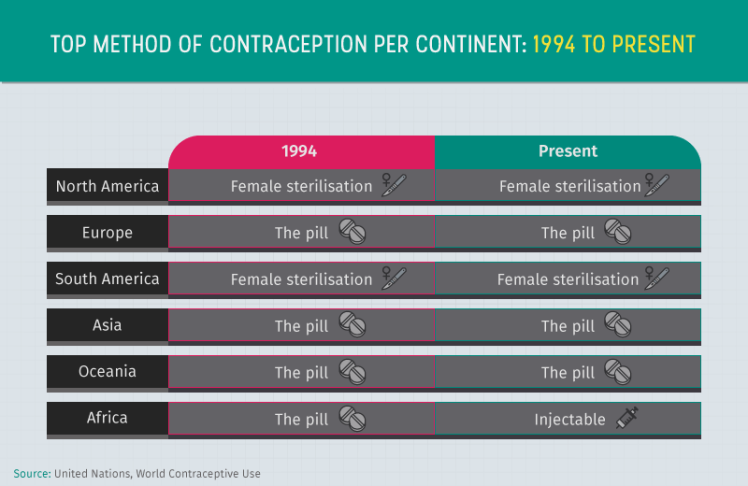This book provides insight into “the state of women worldwide” through graphics and maps with statistics on women’s issues.
Looking through this book gave me so much to think about. I already knew about some of the issues covered in the book, but seeing the exact statistics was enlightening. There are other topics that I knew nothing about, and some of them were outright appalling to me. Overall, I’d say that this book gave me more questions that answers (in a good way). The information included in the book made me want to look deeper into the reasons behind the statistics.
One of my favorite parts of the book is the #JustSayin’ notes sprinkled throughout. These notes offer short examples of women’s efforts to fight for equal rights around the world.
Here are three sections of this book that surprised me, and why.
Page 26: “Child Marriage in the U.S.A.”
Page 26 of the Women’s Atlas presents some statistics that were shocking to me. I already knew that teens aged 16-18 years can get married in the U.S. with their parents’ consent, but I did not know that in many states, children under age 16 can be married with permission from a judge (for a full breakdown of the laws and regulations, see this site).
According to this book, 210,000 minors were married in the U.S. between the years 2000 and 2015. Of these, 5% were aged 15 or younger. Three of them were only 10 years old. 86% of these minors married adults.
The reason why this issue belongs in the Women’s Atlas? 87% of these married minors were girls.
As an anthropologist, I want to know what this practice looks like in reality. What is the reasoning behind allowing children to get married? What are the social, economic and cultural factors behind this practice? What is the age difference between the spouses? What happens to the child after they are married? How do they live? Who are the judges that approved these marriages? And most importantly, why is this still allowed?
I suspect that there are more cases of child marriage not reported in these statistics, because they were not approved or registered by a governing body.
Page 63: “Contraception is still women’s responsibility”
This page presents statistics on birth control methods. According to these stats, female sterilization is the most common method of contraception in the world. Overall, methods of birth control that require men to take initiative are the least common (for example, male condoms make up only 8% of contraception methods worldwide).
After reading this section of the Women’s Atlas, I went to look for more place-specific data on this subject. I looked at sources from The Guardian, United Nations and Superdrug Online Doctor. What I found is that rates of female sterilization are higher in Latin America and North America, as well as Oceania, than the rest of the world (The Guardian). These sources also support the idea presented in the Women’s Atlas that male sterilization is generally safer and less expensive, but female sterilization is still more common.

Again, I’d like to know what the possible cultural reasons behind this might be, especially among women and couples who have many different contraception options accessible to them. Who is making the bulk of these decisions? Is it women themselves, their partners, or joint decisions? How are the other options considered?
Page 98-99: “Sex trafficking (Major global flows of trafficking)”
The spread on these pages is a world map that shows worldwide patterns of sex trafficking. The flows point in many different directions—many regions are both senders and recipients of sex trafficked persons. Women and girls make up 96% of those trafficked for sex. The spread in the Women’s Atlas also points out that sex trafficking rates tend to increase in regions experiencing large scale conflicts or natural disasters.
I feel that awareness of sex trafficking and human trafficking in general is becoming more common in recent years. There are many international organizations that do great work helping victims and raising awareness about the issue. However, what I want to know more about is the cultural, social and economic roots of the problem. What are the circumstances that allow sex trafficking to thrive, not just in certain places, but all over the globe?
This post only scratches the surface of a few issues and ideas covered in the Women’s Atlas. I highly recommend this book to anyone who is interested in women’s issues, international relations, and/or human rights.
Citation for the book:
Seager, Joni. 2018. The Women’s Atlas. New York, NY: Penguin Books.
One thought on “Book Discussion: The Women’s Atlas by Joni Seager”